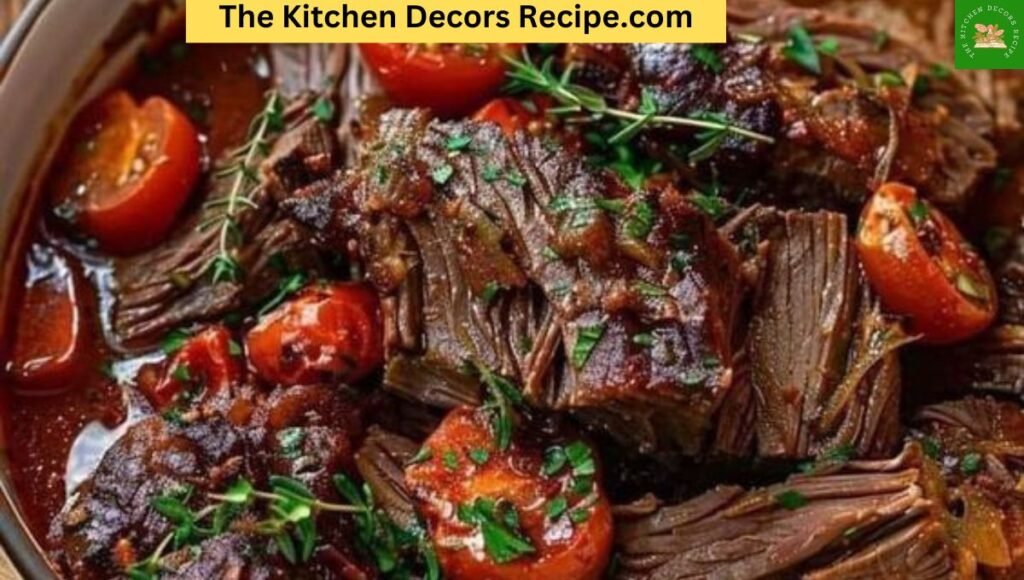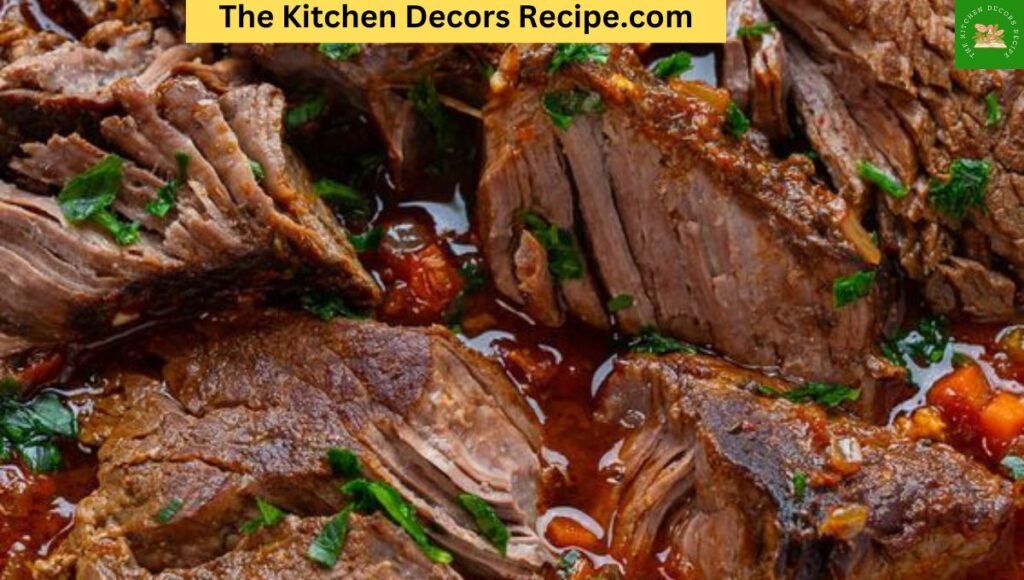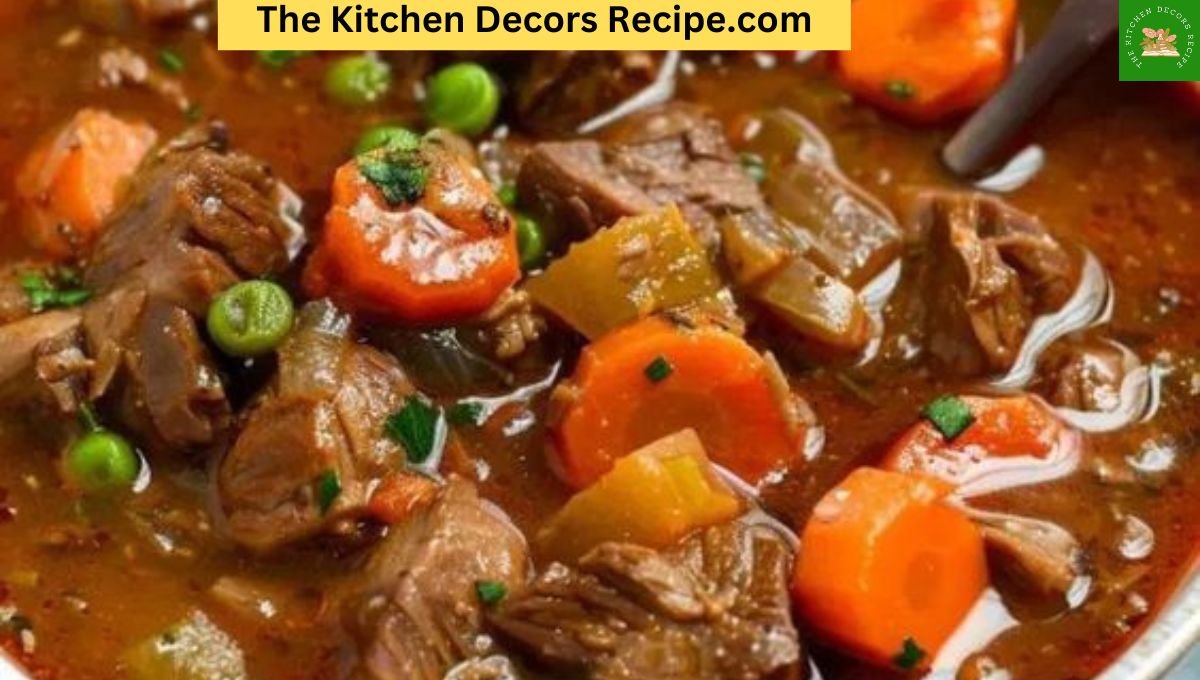What’s the longest you can slow cook beef : Slow cooking beef is a popular way to prepare it. It allows for flavorful, tender meals that require minimal time. A common question is: how long can you safely slow cook beef before it loses its quality or safety. Answering this question is dependent on several factors including the type of beef used, the temperature and the desired result. We’ll delve into this topic in order to better understand how to slow cook beef.
Understanding Slow Cooking: What It Is
Slow cooking is the process of cooking food slowly at a low heat for a long period. This is usually done in a slow cooker. The heat from the slow cooker breaks down connective tissue and collagen, making tougher cuts of meat tender and succulent. The flavors can also meld together and develop using this method, creating a delicious and rich dish.
- If you loved my Slow Cooker Roast Beef, you may like these popular beef recipes:
- How do you keep beef from getting tough in a slow cooker
- Why did my piece of beef harden on crock pot
- How do you thicken beef gravy in a slow cooker
Slow cookers usually have three different settings: low (usually 190degF), high (usually 149degF), and warm. The low setting keeps the temperature at around 190degF, while the high setting stays around 300degF. The warm setting keeps food at a safe, 165degF temperature (74degC) after the cooking process is completed. These settings will affect the cooking time, as well as the type of beef that is being cooked.

How long can you safely slow cook beef?
The duration of slow cooking depends on many factors, including the type of beef being used, the amount of meat to be cooked, and even the temperature of the slow cooker. Here are some guidelines.
- Cooking Low: Beef can be cooked on low for up to 12 hours. Depending on the toughness of the beef cut, such as briskets, short ribs or chuck roasts, it may take up to 14-hours to achieve desired tenderness. It is not recommended that you cook meat for more than 12-14 hours as it can lose its structure and become overcooked.
- Cooking High: Using the high setting for beef, it takes approximately 4 to 6 hour to cook. The high setting may speed up the cooking process but not produce the same level of flavor and tenderness. High-heat cooking shouldn’t exceed 6-8 hours for best results.
- Warm Settings The warm setting does not cook food, but keeps it warm after it is fully cooked. Food safety can be compromised if you leave beef on warm for too long. This is especially true if the temperature has not reached an adequate initial level. It is generally safe to keep beef warm for 2 to 4 hrs.
What happens if you cook beef too long?
Slow cooking is more forgiving than other methods of cooking, but there is still a maximum time that beef can be cooked in a slow cooker. When beef is overcooked, it can lead to several undesirable results:
- Overtenderizing : The collagen and connective tissues in beef breakdown over time. This is what makes it tender. If the meat is left in the slow-cooker for too long, it can become overly soft and lose its texture. It may also fall apart or become mushy.
- Beef Drying Out – Even in a moist environment, if you cook beef for too long it can dry out. This is especially true for leaner meat cuts, as they do not contain enough fat to keep the meat moist. Overcooking causes muscle fibers contract excessively. This results in dry, stringy, and dry meat.
- Loss in Flavor Overcooked beef may lose its flavor. A longer cooking time can lead to ingredients losing their distinctive tastes.
- Nutrient loss: Long-term cooking can cause some nutrients to be lost, especially water-soluble vitamins such as B vitamins. Even though the loss of nutrients is not significant, it’s still something to consider, especially if the beef is cooked for a long period of time.

Slow Cooking Beef: Factors that Affect the Time
There are several factors that influence the length of time you should slow cook beef to achieve the best results.
- Beef Cut: Each cut of beef has a different composition and requires varying cooking time. Longer cooking times are needed for tougher cuts like chuck roast, short ribs and brisket to break down the collagen and connective tissues. Leaner cuts like tenderloin and sirloin cook faster, but can become dry or tough if overcooked.
- Size: The thickness and size of the beef cuts also influence the cooking time. Cooking larger or thicker cuts will take more time than cooking smaller or thinner pieces. If the recipe permits, cut the beef into uniform-sized pieces to ensure even cooking.
- Temperature Settings: Cooking times will vary depending on whether or not you use the high or low setting of the slow cooker. Slow cooking allows for a longer cooking time and a more gradual flavor development. Cooking at high speeds will reduce cooking time, but not necessarily produce the same results.
- Liquid content: How long you can cook beef depends on the amount of liquid. Often, dishes with more liquid will cook longer without drying the meat. Too much liquid, however, can dilute the flavors. It’s therefore important to find the right balance.
- Lid on or Off : By keeping the lid on, you can prevent beef from drying during long cooking periods. The lid can be removed too often, which increases evaporation and could lead to dry meat.
Long Slow Cooking Tips
Here are some tips for slow cooking beef to get the best results.
- Select the Right Beef Cut: Choose tougher cuts such as chuck roasts, briskets or short ribs that are best suited for long, slow cooking. These cuts contain more connective tissues that break down with time to produce tender and flavorful meat.
- Make Sure You Have Enough Liquid Ensure that you have enough liquid to cook the beef in the slow cooker. It can be a mixture of liquids, such as wine, broth, or stock. Do not add too much liquid, as it can dilute flavors.
- Monitor Temperature Use a meat temperature meter to measure the internal temperature. To ensure safety, the beef must reach a temperature of 145degF. If you intend to cook beef for a long time, make sure it reaches the temperature recommended within the first couple of hours.
- Lower the temperature for a longer cooking time The low setting works best for slow, long cooking. This setting allows for the beef to be cooked gently. This helps retain moisture and develop flavors without overcooking.
- Avoid Frequent Lifting of the Lid Each time you lift the lid, heat and moisture can escape. This could extend cooking time or even dry out the meat. Keep the lid on as much as you can if you want to check the progress.
Slow Cooking Beef: Best Practices
Slow cooking beef requires some special considerations.
- Prebrown the Beef While it is not necessary to brown the beef, doing so before adding it into the slow cooker will enhance the color and flavor of the dish. This step caramelizes and enhances the flavor of the dish by caramelizing its exterior.
- Cut Beef Evenly : To ensure an even cooking, cut the beef into smaller pieces. This will prevent some pieces of beef from being overcooked while others are undercooked.
- Take into Account the Cooking Environment. Slow cookers maintain a constant temperature. However, external factors such as room temperature and humidity may affect cooking times. Be sure to check the doneness of your beef, especially if you are cooking it for a long time.
Conclusion: What is too long?
The length of time you can cook beef on low or high temperature depends on a number of factors including the type of meat used, the temperature, and your desired result. In general, you can safely slow cook beef on low for 8-12 hours or on high for four to six hours. You can cook tougher cuts for up to 12 hours on low. However, if you want to extend the cooking time, it is best to limit this to 4 to 6 hours.
Slow cooking is flexible and forgiving, but you must balance temperature and time to get the perfect dish. Follow best practices, and monitor the texture and moisture of the meat to get the most out of your slow-cooked steak.
